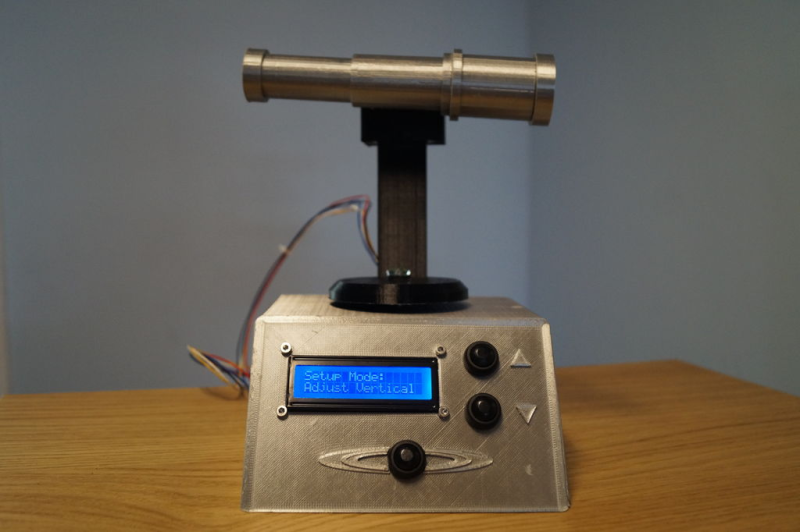When the world is on your shoulders, it can be relaxing to remember that we’re just hairless monkeys hurtling through space on a big rock alongside a lot of other rocks. If you find yourself wondering where exactly the other major rocks are instead of worrying, we think that’s a good sign.
Wherever [snowbiscuit] lives, there’s a large planet finder in a public square somewhere that stopped locating rocks a long time ago. Hungry to watch such a thing in action, [snowbiscuit] built a great-looking tabletop version that uses the Horizontal Coordinate System to locate planets. Inside is a Raspberry Pi 3, which queries NASA for azimuth and altitude data and combines that data with a predetermined north reading to point out whatever planet was selected by spinning the printed telescope on top. The telescope itself is non-working, and returns to north after a few seconds to wait for input.
This project is wide open for remixing if you want to make your own. As lovely as it is now, designing around a slip ring would eliminate all those long wires and make it more sleek. Take a peek after the break.
Don’t stop your desktop space toy collection there — build an ISS-tracking lamp to go with it.
















This is a really spiffy build. The look of the lelescope and mount are great.
Please do not encourage ppl to twist small telescopes. First thing a n00b does on seeing any of mine is to grab the damn finder scope and try to twist it for some ignorant n00bish reason.
Has he heard of Kepler’s elements? There are many offline calculators that just need GPS coordinates.
Ah, the canonical text has gone up:
https://www.amazon.com/Astronomical-Algorithms-Jean-Meeus/dp/0943396611
Somewhere I should have my opensource sky may available.
I’d like to learn how to build something similar to this but without a motor. I’m interested in developing a Digital Setting Circle device that relies completely on orientation sensors combined with GPS/GNSS data, deliberately not using the hardware axes of a telescope and therefore making it 100% universal just like how a smartphone with magnetometers and gyroscopes figure out how to make live astronomy apps interactive based on the orientation of the device. What I’m hoping to do is build it onto Arduino but physically separated from a usb connected Raspberry Pi such that only the Arduino sensors are tilted in the various positions while the Raspberry and touchscreen are stationary.
I wish that somebody had said /where/ there was a defunct planet finder exhibit: as hackers we ought to be asking what can be done about it.